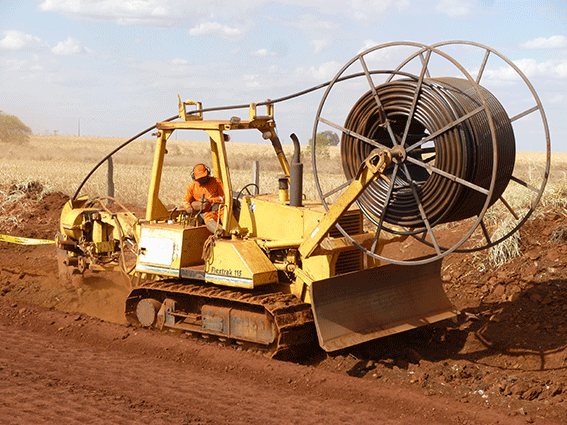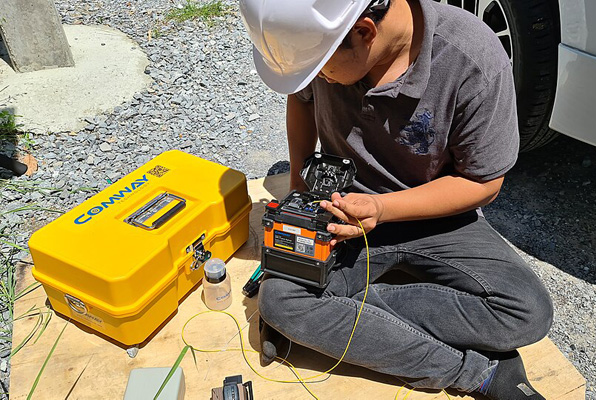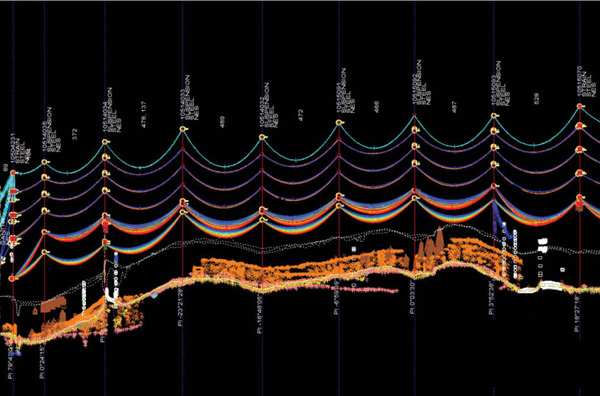
Despite the significant advancements in FTTx technology and fiber to the home in particular and the growing deployment of fiber networks worldwide, there are still several unsolved problems and challenges in FTTx planning and mapping as of now. These challenges primarily stem from the complexity of planning large-scale networks, diverse geographical and urban environments, and the need for precision in deployment to minimize costs and maximize performance. There are big and established companies which provide full-scale fiber network management systems, including various tools for fiber planning and fiber mapping, and the industry is constantly evolving, but problems remain and new challenges emerge daily.
Here are some key unsolved problems of fiber FTTh planning.
1. Accurate demand forecasting and planning
- Uncertainty in demand patterns. Predicting where and when high-demand for fiber connectivity will emerge is still an unsolved challenge. Demographics, migration patterns, new residential or commercial developments, and changes in user behavior all impact demand. Poor demand forecasting can lead to either overbuilding, which increases costs, or underbuilding, which results in service gaps.
- Dynamic demand changes. FTTh planning is based on long-term investments, but the speed at which demand can change (due to factors like pandemics and as a result – remote work, digital transformation, or new technologies such as AR/VR) poses a challenge for accurately planning where and how to build fiber infrastructure.
2. High costs of rural and low-density area deployments
- Expensive last-mile spans. One of the biggest unresolved issues in FTTh planning is the high cost of last-mile connectivity in rural and sparsely populated areas. The distance between homes and the low number of potential customers per kilometer of fiber still make it financially unviable for many network operators.
- Balancing cost vs. service quality. While it is believed that demand for fiber in rural areas is increasing, the costs of trenching, permitting, and maintenance are significantly higher than in urban areas. Addressing this cost disparity remains a major challenge, despite subsidies and government incentives. And is prospected to remain the same for a very long time.
3. Complexities in FTTh planning underground and aerial infrastructure
- Lack of accurate infrastructure data. One of the biggest obstacles in FTTh planning and FTTh mapping is the lack of accurate and up-to-date data on existing underground and aerial infrastructure. Often, there is no precise mapping of existing conduits, ducts, or utility poles, making it difficult to plan the most efficient routes. Incorrect or outdated data can lead to costly delays and rework. ISPs still face the situations with congested conduits, worn out utility poles, etc. Wooden utility poles dating back to 1950s or 1960s can be assessed as pretty stable at first glance, but when it comes pole loading engineering, it turns out they aren’t suitable for hanging overhead fiber cables.
- Hidden obstacles and legacy infrastructure. In many urban areas, the underground infrastructure is congested with utilities like gas, water, electricity, and older telecom cables. Identifying available space for fiber, especially without accurate maps, is a significant challenge. Similarly, legacy copper networks are often poorly mapped, complicating FTTh planning for fiber network upgrades.
4. Permitting and regulatory bottlenecks
- Inconsistent local regulations. Obtaining permits for digging, laying fiber, or using aerial infrastructure is often a lengthy and complex process. Local governments may have different requirements, resulting in unpredictable delays. The lack of standardized permitting processes across regions and countries adds complexity to FTTh planning. Even if you fully comply with NESC you can still receive a no-go from local authorities due to different reasons. Sometimes obtaining a green light for MRE (make-ready engineering) for overhead fiber spans is extremely time consuming.
- Right-of-way disputes. Securing rights-of-way (ROW) from municipalities or private landowners can be a time-consuming and difficult task, particularly in urban areas where space is limited, or in rural areas where the property ownership landscape is fragmented. These disputes can result in significant project delays. Landowners can block any of your prospected plans for fiber rollout.
5. Cost optimization for dense urban deployments
- Balancing cost with capacity. In densely populated urban areas, while demand is high, the cost of deployment also increases due to complex building requirements, space limitations, and the need for higher-capacity fiber routes. The challenge is to deploy fiber that is scalable enough to handle future traffic growth without incurring excessive costs upfront.
- In-building fiber deployments. Especially in multi-dwelling units (MDUs), connecting each apartment or unit to fiber is a challenge due to building layouts, existing infrastructure, and resistance from building management. Mapping internal building networks and planning the optimal fiber routes within buildings can be complex and expensive. Similar looking MDUs can be drastically different inside, with costs of internal fiber layout differing up to 10 times. So a visual building assessment can be misleading.
6. Integration of new technologies with existing networks
- Compatibility with legacy infrastructure. Many FTTh deployments must coexist with legacy copper or coaxial networks, especially in areas where a complete overhaul is not financially feasible. Planning how to integrate new fiber technologies with existing infrastructure, while ensuring smooth service transitions and minimal disruptions, remains a challenge.
- Designing future-proof networks. Another unsolved problem is planning FTTh networks that can accommodate future technologies (like 5G, IoT, edge computing, or even 6G) without requiring massive upgrades. Ensuring that the fiber network can support future traffic loads and applications is difficult due to the fast-paced development of new technologies.
7. Mapping and planning for multi-access fiber networks
- Hybrid fiber and wireless networks. With the increasing integration of fiber with 5G backhaul and other wireless technologies, FTTh planning and mapping must now consider hybrid models where fiber and wireless networks co-exist. Ensuring seamless connectivity between fiber and wireless access points, and accounting for factors like latency and bandwidth distribution, is still a complex and evolving area.
- Dynamic bandwidth allocation. Planning how to dynamically allocate bandwidth in a multi-access fiber network (e.g., fiber for residential broadband and wireless for IoT or 5G services) remains challenging. Current FTTh planning tools are not fully equipped to handle these hybrid scenarios efficiently.
8. Environmental and geographic challenges
- Geographical obstacles. Planning FTTh in challenging terrains, such as mountainous areas, dense forests, or regions prone to flooding, is still difficult and expensive. Routing fiber through these areas often requires custom solutions and increases the cost per connection.
- Weather-related disruptions. Mapping routes that can withstand environmental factors like extreme weather (e.g., hurricanes, flooding, landslides) is an ongoing challenge. Ensuring that the fiber infrastructure is resilient enough to minimize service disruptions in the face of such events adds complexity to the planning process. It means it is not enough to pick the correct NESC load case and make your fiber optic network fully compliant with it.
9. Efficient use of existing infrastructure (ducts and poles)
- Lack of infrastructure sharing. While infrastructure sharing (using existing ducts, poles, or conduits) can reduce costs, the availability and accessibility of this infrastructure are often limited. Regulatory and ownership issues between different telecom operators, utility companies, and municipalities make it difficult to share infrastructure efficiently. Joint use associations help mitigate such problems, but the complexity of the problem itself sometimes leads to those associations creating even more problems.
- Capacity limitations of existing conduits. Even when existing infrastructure is available for sharing, it may not have enough capacity to accommodate new fiber deployments. Mapping these limitations accurately remains an issue in many areas. FTTh planning in such conditions requires a lot of preparatory work in the field beforehand.
10. Granular and real-time fiber network planning tools
- Lack of real-time data for FTTh planning. One of the persistent problems is the limited ability of current FTTh planning tools to incorporate real-time data into their design processes. Fiber engineers often have to work with static datasets, which may not reflect changes in the physical environment (e.g., new constructions, roadworks, or recent repairs) or current network traffic patterns, especially for larger scale fiber projects when the work spans over months.
- Incomplete integration of AI and automation. While AI and automation are making strides in FTTh planning, there is still a gap in fully automating the end-to-end design process. The integration of AI-driven optimization for cost, performance, and future scalability in real-world deployment scenarios is not yet fully realized.
11. Fiber network security considerations
- Mapping secure network designs. As cybersecurity threats grow, ensuring secure network designs and anticipating vulnerabilities during the FTTh planning and mapping phase is a growing concern. Fiber networks, while generally more secure than copper, still face risks from physical breaches, data interception, and attacks on vulnerable points in the network infrastructure. Incorporating these security considerations into FTTh planning is an evolving challenge.
12. Data-driven maintenance and future-proofing
- Predictive maintenance modeling. Some fiber planning software now includes predictive maintenance features that use data from the planning stage to predict future network failures or maintenance needs. This allows operators to plan preventative measures and reduce operational costs over the long term.
- Designing for future scalability. Tools that allow engineers to simulate future fiber network demand (e.g., increased bandwidth usage or new applications) ensure that fiber networks are designed with future growth in mind, reducing the need for costly upgrades later. These features are essential as more smart city, IoT, and high-bandwidth services come online.
13. Blockchain integration for secure network planning
- Blockchain for resource sharing. Some fiber planning systems are exploring the use of blockchain technology to track and manage shared network resources (such as conduits, poles, or ducts) across different stakeholders. This ensures transparent and secure resource allocation, particularly in cases of public-private partnerships or shared infrastructure.
- Security in network planning. Blockchain can also be used to secure the FTTh planning process itself, creating an immutable ledger of decisions, permits, contracts, and design approvals, reducing disputes and enhancing transparency between contractors, municipalities, and network operators. But at current stage acquiring such technologies can lead to an increased number of problems.
Conclusion
While FTTh network planning, design and deployment have come a long way, unresolved issues like accurate demand forecasting, high costs in rural areas, complex permitting processes, and the integration of legacy and emerging technologies continue to present challenges. Improvements in real-time data integration, AI-driven planning, and better infrastructure sharing practices could help resolve some of these problems in the future, but as of 2024, they remain significant hurdles for widespread and efficient FTTh deployment. It seems that the problem of the last mile is going to haunt ISPs and telcos for decades.
Advanced fiber planning software is evolving to incorporate AI, digital twins, AR/VR, and automated workflows, making fiber network planning, design, management, and deployment more efficient, cost-effective, and future-proof. These breakthrough features are helping operators tackle the increasing complexity of fiber networks and paving the way for next-generation connectivity infrastructure.
Take care of your splice sheets
1000+ ISPs are already saving weeks of work with Splice.me!




